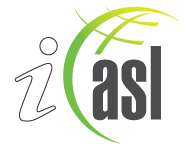

|
|
From Plan to Publishing with the GiggleIT Project – Student research & writing process
Publishing your work means presenting it for an audience to see, read, or hear. In-school publishing is limited to your classmates and teacher, while open publishing shows your work to your community and beyond.
Here is one workflow for in-school publishing; it’s also useful for open publishing and personal writing.
Visualize your work. Think about what you want to achieve, how you want the end product to appear, and what it will say.
Determine what you already know. Try mind maps and graphic organizers which give frameworks to help organize your thoughts about what you already know. They can also reveal what you don’t know and need to find out.
Make an action plan with a timeline. Include deadlines and required tasks. This will help to keep you on track. Each section of your action plan should be manageable so you don’t try to do everything at once.
Start your research. Time to fill in the information gaps, using a variety of resources and verifying that your information is accurate (true) and up-to-date.
Take notes. Include links to resources, new words and meanings, and further questions to research. You must give credit to the actual author or creator all the online and off-line information you find in your references list. Use a note template to record the bibliographic information and your thoughts in your own words (to avoid plagiarism).
Add to your graphic organizer. From your notes, add useful information to your organizer. If you need more information, check the sources in your notes and see what they link to.
Plan your work. Consider the major concepts in your graphic organizer or mind-map. For an essay, create an outline with thesis statement, supporting points, and conclusion. For a story, poem, or joke, decide what goes first, in the middle, and last. Remember that you don’t have to include every fact that you have uncovered in your research!
Make a rough draft. Add sentences to the points of your outline/plan. An essay may have direct quotations from research sources (be sure to include that bibliographic information).
Read your draft aloud. Listen for words left out or repeated. Does your essay answer its thesis question? Does your poem follow the rules for its genre? Does your story keep listeners interested until the end? Also pay attention to word count (minimum or maximum) if required.
Revise your work. Fix the issues in your rough draft found in step 9, then read it aloud again. You’ll probably need to repeat this part a few times. You can ask someone to read your draft and make suggestions, too.
Prepare your final copy. Double-check the assignment criteria for margins, font size, etc. Be sure you have acknowledged where you found information and quotations (if used). Include those sources on your resource list/bibliography.
Publish your work. Whether it’s a paper for class or a poem for your own reflection, you are a writer – be proud of your work!
As a collaborative Project between educators and students around the world, the GiggleIT Project operates under a Creative Commons license which allows everyone to share ideas and resources while still recognizing the work done by the original authors.
